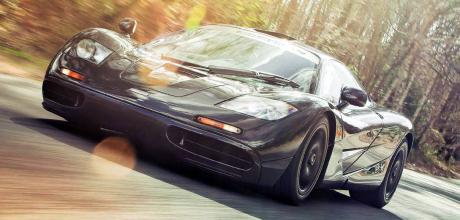McLaren F1 wins the supercar wars

Can a car with the status of the McLaren F1 really be considered a giant-killer? Yes it can, when you consider the circumstances it was born into. The supercar wars raged throughout the Eighties, fuelled by the demands of wealthy market speculators who often traded their appreciating-asset supercars without actually driving them. But the cars needed credible high performance, so the technology came straight from the track. Porsche’s 911 Turbos and 959, then Ferrari’s 288GTO and F40, all the product of Group B and C racing developments, raised the benchmark first to 190, then 200mph. As the Nineties dawned, Jaguar’s XJ220 raised it to a jaw-dropping 217. And then the economy crashed, rendering many of these supercars unsaleable.
‘McLaren never had built a road car before, but it would be an F1-inspired machine with a central driving position and gold-lined engine bay’
McLaren F1 design supremo Gordon Murray saw them as flawed, and dreamed of a supercar designed on a genuine cost no-object basis. In the aftermath of the 1988 Italian Grand Prix, at the height of McLaren’s Senna era, bosses Ron Dennis and Mansour Ojjeh hatched a plan to build it. Despite McLaren never having built a production road car, it would be an F1-inspired machine with a central driving position, gold-lined engine bay and road-tuned Honda F1 engine, assembled with a finesse that would make the Ferrari F40 look like a kit car.
Murray ended up having to make a compromise on the engine – a BMW V12 was substituted after it became clear a genuine F1 powerplant wasn’t tractable enough for road use. Less than a year into development, Honda’s own NSX made rival supercars look unreliable, unfriendly and overpriced. Murray vowed to ensure the McLaren F1 would be just as userfriendly as the NSX, running one himself to make sure.
The first F1s were revealed to the public in the depths of the 1992 recession carrying a £640,000 price tag. McLaren struggled to sell them, but the performance figures spoke for themselves – 0-60 in 3.2 seconds and on to a top speed in excess of 230mph with ease, mere months after the XJ220’s record-setting run at Ford Stockton. Economic circumstances meant no rival dared to counter it. It would be 13 years before the mighty VW Group topped it with its money-burning Bugatti Veyron.

